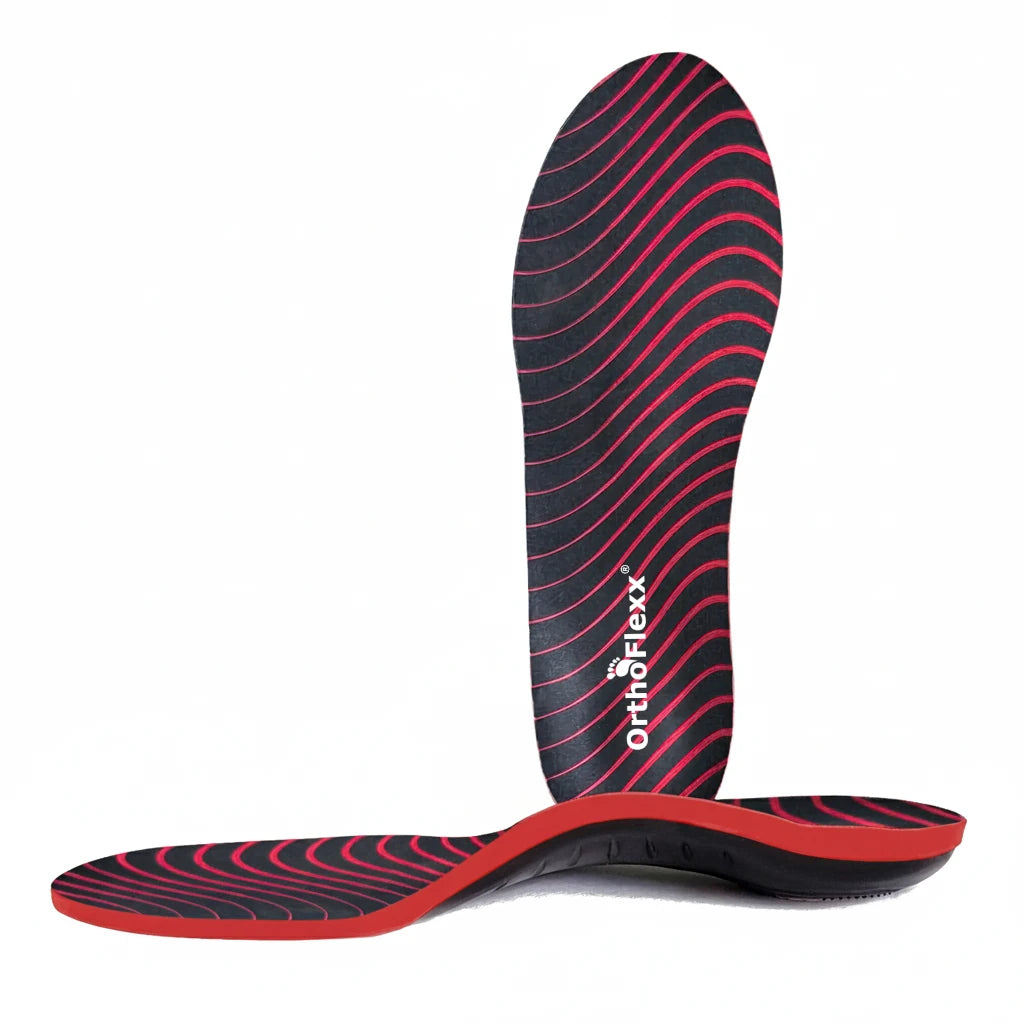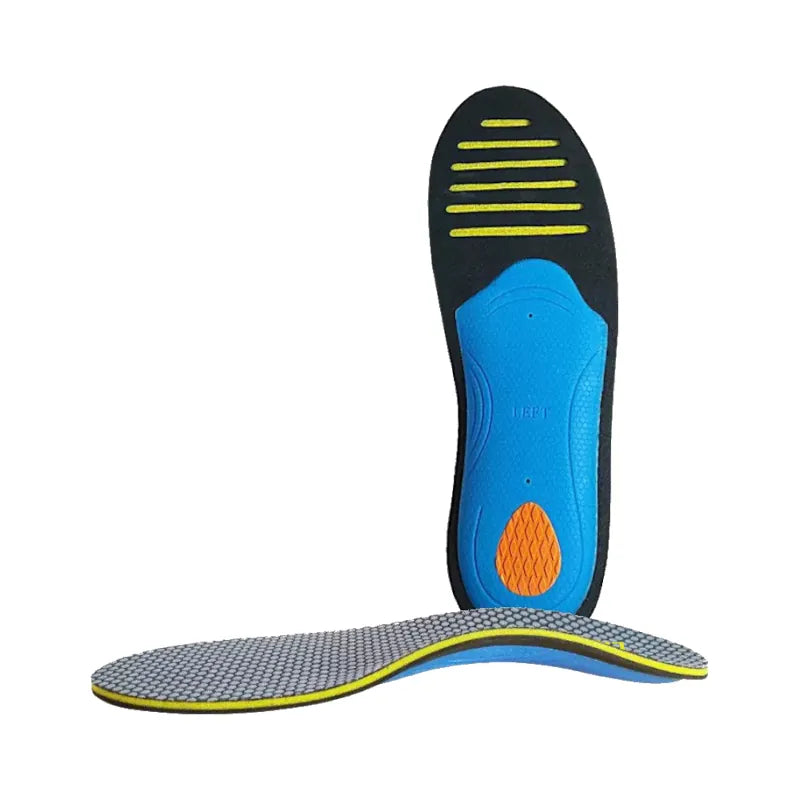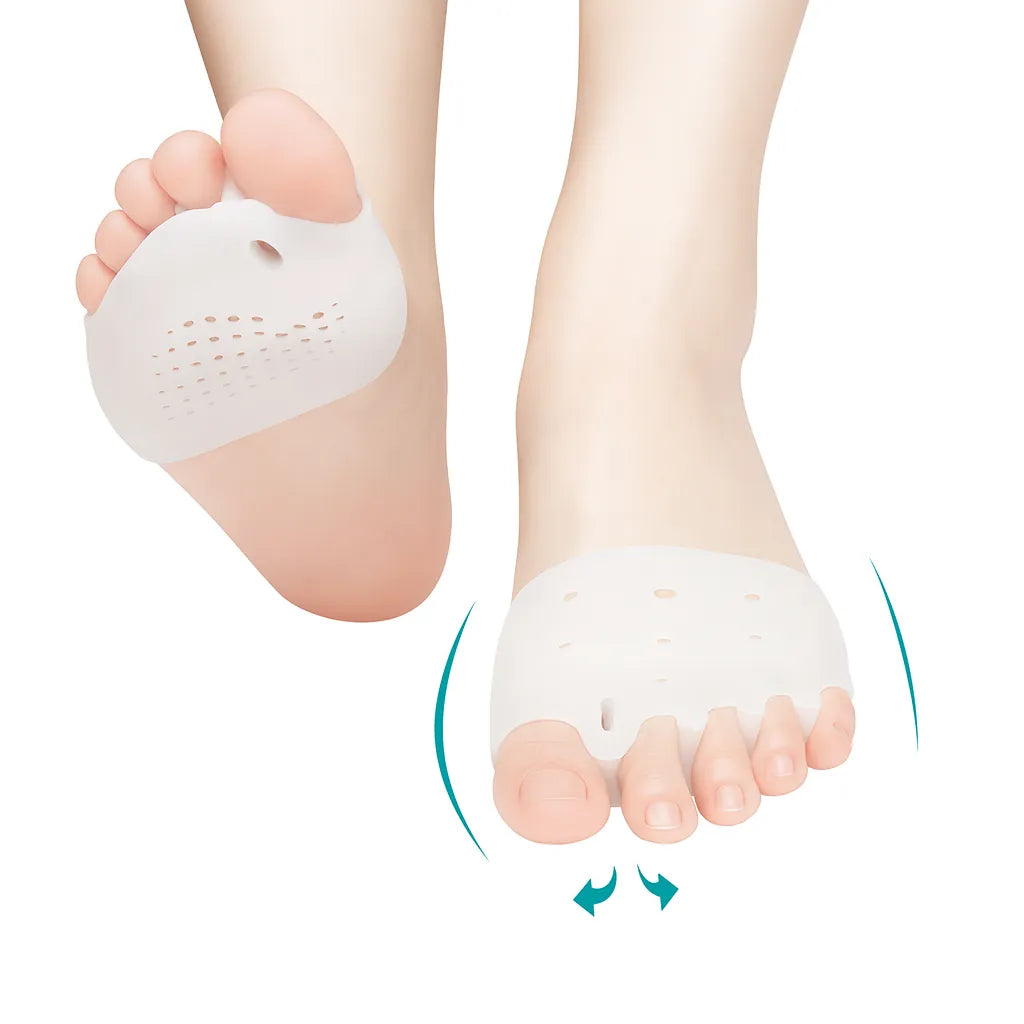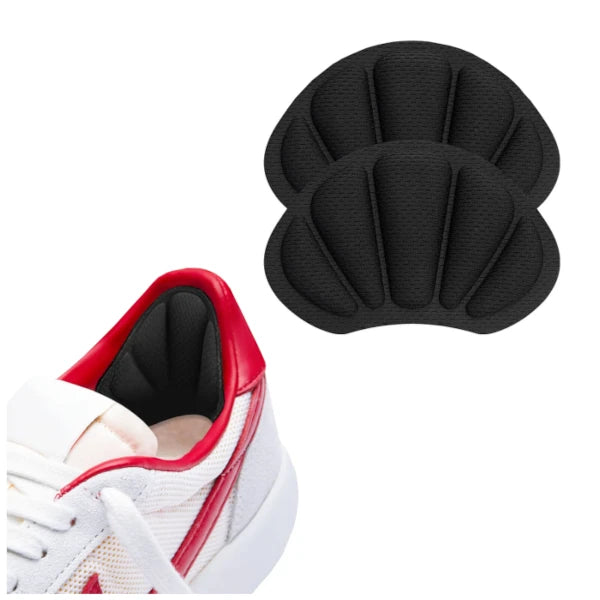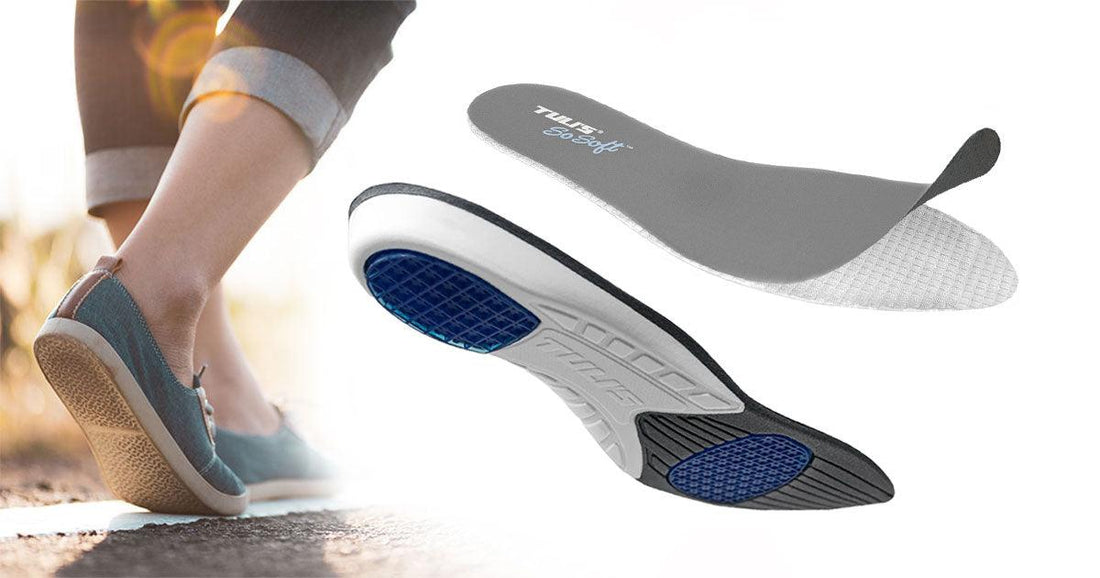
Choosing the Right Orthotic Inserts for Plantar Fasciitis
Share
Top 10 Plantar Fasciitis Insoles 2023 - Expert Recommendations
Imagine this: you wake up in the morning, ready to take on the day, only to be greeted by a searing pain in your foot. If you've experienced this, chances are you're one of the many plantar fasciitis sufferers out there. Plantar fasciitis is a common condition characterized by inflammation and irritation of the plantar fascia, a thick band of tissue that runs along the bottom of your foot. Relief is within reach with the right orthotic inserts for plantar fasciitis.

We'll explore why choosing the right inserts is crucial for effective treatment and help you make an informed decision about your orthotic needs. So, if you're tired of hobbling around in discomfort, keep reading to discover how these firm-yet-comfortable inserts can transform your step.
Understanding Foot Type and Condition
To choose the right orthotic inserts for plantar fasciitis, it's important to understand your foot type and condition. By considering factors such as arch height, pronation, and foot flexibility, you can find orthotics that provide the appropriate support for your specific needs.
Assessing the severity of your plantar fasciitis condition is crucial in determining the level of support required. Different foot types may require specific orthotic features to address their unique needs. Let's delve into these points further:
Determine Your Foot Type
Before selecting orthotics, it's essential to determine your foot type. This will help you find the most suitable inserts for your feet. Factors like arch height (high, medium, or low), foot position (overpronation or under pronation), and foot mobility play a significant role in identifying your foot type.
Consider Factors Like Arch Height, Position, and Foot Mobility
Arch height refers to the shape of your arches—whether they are high, medium, or low. Position refers to how your feet roll inward or outward while walking or running. Foot mobility relates to how easily you can bend or flex your feet.
By considering these factors together, you can gain insights into which orthotic features would be beneficial for addressing issues related to flat feet, chronic foot pain, or other conditions associated with different foot types.
Assess the Severity of Your Plantar Fasciitis Condition
The severity of plantar fasciitis varies from person to person. Some individuals may experience mild discomfort while others may suffer from debilitating pain. Understanding the severity of your condition will help you select orthotics with appropriate levels of cushioning and support.
By taking into account these aspects—foot type and condition—you can make an informed decision when choosing orthotic inserts for plantar fasciitis. Remember that everyone's feet are unique; what works for one person may not work for another. It's always advisable to consult with a healthcare professional or podiatrist who can provide personalized recommendations based on your specific needs.
Tips for Selecting the Right Orthotics
Look for targeted support
When choosing orthotic inserts for plantar fasciitis, it's crucial to find ones that offer targeted support for both the heel and arch of your foot. These areas are most affected by plantar fasciitis, so having proper cushioning and stability in these regions is essential.
Consider comfort and stability
While comfort is important, it should not come at the expense of stability. Look for cushioning materials that provide a balance between comfort and stability. Materials like gel or memory foam can offer excellent cushioning while still providing the necessary support to alleviate pain caused by plantar fasciitis.
Opt for customization
Everyone's feet are different, so finding orthotics that can be customized or adjusted to cater to individual needs is beneficial. Customizable inserts allow you to fine-tune the level of support and comfort based on your specific requirements.
Additional features matter
In addition to targeted support and customization options, consider any additional features that may enhance your experience with orthotic inserts. Some inserts come with antimicrobial properties to prevent odor-causing bacteria, while others have moisture-wicking capabilities to keep your feet dry throughout the day.
Price tag considerations
Lastly, when selecting orthotics for plantar fasciitis, it's important to consider your budget. While some high-end options may offer advanced features and materials, there are also more affordable alternatives that provide adequate support and relief from pain.
Remember that finding the right orthotic inserts may require some trial and error. What works well for one person may not work as effectively for another. Take into account customer reviews, star ratings, and recommendations from healthcare professionals when making your decision.
Best Insoles for Plantar Fasciitis Arch Support
If you're dealing with plantar fasciitis and looking for relief, choosing the right orthotic inserts can make a world of difference. Here are some key factors to consider when selecting the best insoles for plantar fasciitis arch support:
Firm Arch Support
To alleviate strain on the plantar fascia, opt for insoles that offer firm arch support. These inserts provide stability and help distribute weight evenly, reducing pressure on the inflamed tissue. Look for options specifically designed to address plantar fasciitis.
Contoured Designs
Consider insoles with contoured designs that match the natural shape of your foot. These inserts provide customized support and help maintain proper alignment. They can also prevent overpronation or supination, which may contribute to plantar fasciitis pain.
Recommendations from Experts
It's helpful to seek recommendations from trusted experts like podiatrists or orthopedic specialists. They have extensive knowledge and experience in treating foot conditions and can guide you towards reputable brands known for their effectiveness in managing plantar fasciitis.
High-Quality Materials
Ensure that the insoles you choose are made from high-quality materials that offer long-lasting support. Look for options crafted from durable materials such as EVA foam or silicone gel that can withstand regular use without losing their cushioning properties. This way, you can rely on your chosen insoles to provide ongoing comfort and relief.
By considering these factors when selecting your orthotic inserts, you'll be well on your way to finding the best insoles for plantar fasciitis arch support.
Considerations for Orthotics in Different Shoes
It's important to consider the type of shoes you wear. Avoid a one-size-fits-all approach and select orthotics based on the shoe type, whether it's athletic shoes or dress shoes. Here are some key considerations to keep in mind:
Shoe Size and Width Compatibility
Take into account your shoe size and width when choosing compatible orthotics. It's crucial to find inserts that fit well within your favorite shoes. Ill-fitting orthotics can cause discomfort and may not provide the necessary support for your feet.
Slim-Profile Inserts for Tighter-Fitting Shoes
If you often wear tighter-fitting shoes like dress shoes or sandals, look for slim-profile orthotic inserts. These inserts are designed to provide support without adding bulkiness or making your shoes feel too tight. They offer a discreet solution while still addressing the needs of your feet.
Specialized Insoles for Specific Shoe Styles
Different shoe styles can present unique challenges for individuals with plantar fasciitis. Look for specialized insoles that are specifically designed to address common issues associated with certain shoe styles. For example, if you enjoy hiking and frequently wear hiking boots, consider finding insoles that offer extra cushioning and shock absorption for those long hikes.
Material of the Insole
Pay attention to the material of the insole as it can impact comfort and durability. Some materials may be more suitable for certain activities or climates than others. For instance, if you engage in high-impact activities like running, opt for orthotic inserts with materials that provide excellent shock absorption.
By considering these factors when selecting orthotic inserts, you can ensure that they are compatible with your preferred footwear while providing optimal support and relief from plantar fasciitis symptoms.
Avoiding Common Mistakes with Orthotic Selection

Beware of Buying Generic Over-the-Counter Inserts Without Proper Assessment
One common mistake to avoid is buying generic over-the-counter inserts without proper assessment. While these inserts may seem convenient and cost-effective, they may not provide the necessary support and relief for your specific condition. It's crucial to consult a healthcare professional or a podiatrist who can assess your foot structure and recommend suitable orthotics.
Pros:
- Convenient and readily available
- Cost-effective option compared to custom-made orthotics
Cons:
- May not provide adequate support for plantar fasciitis
- Lack customization for individual foot conditions
Avoid Choosing Orthotics Solely Based on Price; Prioritize Quality and Effectiveness
Another mistake to steer clear of is choosing orthotics solely based on price. While affordability is important, it's essential to prioritize quality and effectiveness when selecting inserts for plantar fasciitis. Investing in durable materials that can withstand regular wear on hard surfaces is crucial for long-term use.
Pros:
- Affordable options available
- Wide range of choices in different price ranges
Cons:
- Lower-priced options may lack durability
- Cheap materials may not provide sufficient support or comfort
Don't Overlook the Importance of Proper Fit and Comfort When Selecting Inserts
When selecting orthotic inserts, it's vital not to overlook the importance of proper fit and comfort. Ill-fitting or uncomfortable inserts can exacerbate foot pain rather than alleviate it. Ensure that you choose the right size available and opt for inserts that offer cushioning and support where needed.
Pros:
- Inserts available in various sizes
- Options with added cushioning for enhanced comfort
Cons:
- Incorrect sizing can lead to discomfort
- Inadequate cushioning may not provide sufficient relief
Steer Clear of Orthotics That Do Not Address Your Specific Foot Condition or Type
Lastly, it's crucial to steer clear of orthotics that do not address your specific foot condition or type. Different individuals may have different foot structures and conditions, such as high arches or flat feet. It's important to choose inserts that cater to your specific needs and provide the necessary support for plantar fasciitis.
Finding Relief with the Right Orthotic Inserts
Congratulations! You are now armed with valuable knowledge on how to choose the right orthotic inserts for your plantar fasciitis. By understanding your foot type and condition, considering different shoes, and avoiding common mistakes, you are well on your way to finding the relief you deserve.
Now it's time to take action. Don't let plantar fasciitis hold you back any longer. Invest in high-quality orthotic inserts that provide the necessary arch support and cushioning for your feet. Remember, just like a car needs good tires to perform at its best, your feet need proper support to keep you moving pain-free.
So go ahead, make a choice that will transform your daily life. Say goodbye to discomfort and hello to comfort with the right orthotic inserts tailored specifically for your needs. Your feet will thank you!
FAQs
How long does it take for orthotic inserts to provide relief?
It varies from person to person, but many individuals experience relief within a few weeks of consistently wearing orthotic inserts. However, it's important to note that everyone's journey is unique and results may vary.
Can I use the same orthotics in different pairs of shoes?
In most cases, yes! As long as the shoes have a removable insole or enough room to accommodate the additional thickness of the orthotics, you can transfer them between different pairs of shoes.
Can I wear orthotic inserts while exercising or playing sports?
Absolutely! In fact, wearing orthotics during physical activities can provide extra support and help alleviate stress on your feet. Just make sure to choose athletic shoes that are compatible with your specific type of activity.
How often should I replace my orthotic inserts?
Orthotics typically last between six months to a year depending on usage and quality. Keep an eye out for signs of wear and tear, and if you notice a decrease in support or cushioning, it's time to consider replacing them.
Can orthotic inserts prevent plantar fasciitis from recurring?
While orthotics can provide significant relief from plantar fasciitis symptoms, they cannot guarantee prevention of future flare-ups. It's important to continue practicing good foot care habits such as stretching, wearing supportive footwear, and maintaining a healthy weight to reduce the risk of recurrence.
Author Bio

Marlene Carvalho
Certified Sports Physiotherapist of Elite and Olympic athletes; Performance Coach to racing drivers
Marlene Carvalho is a sports physiotherapist passionate about all things sports.
